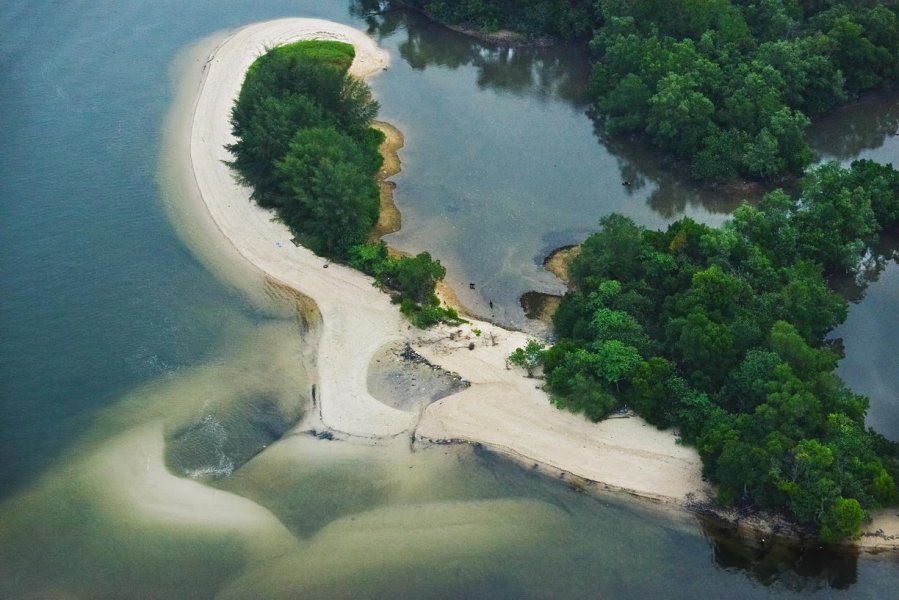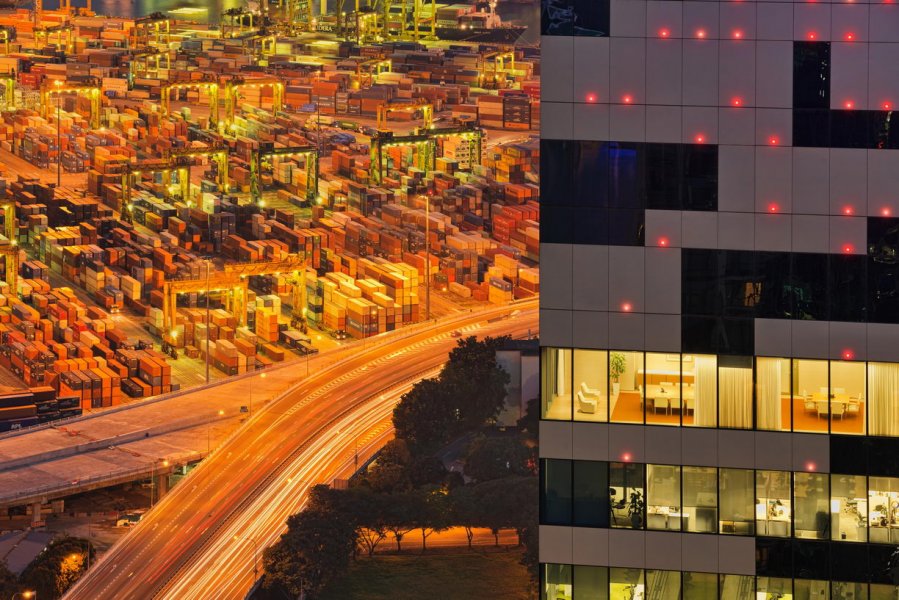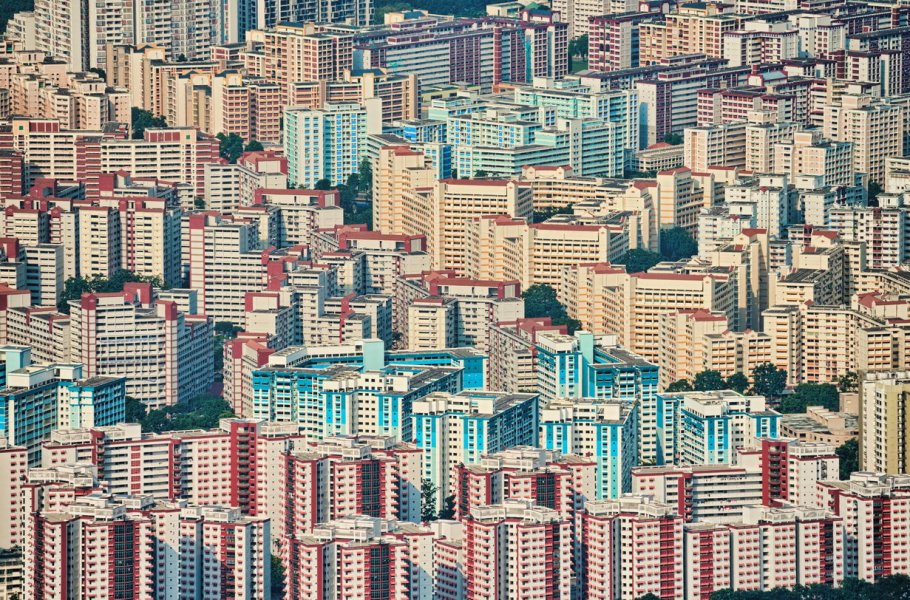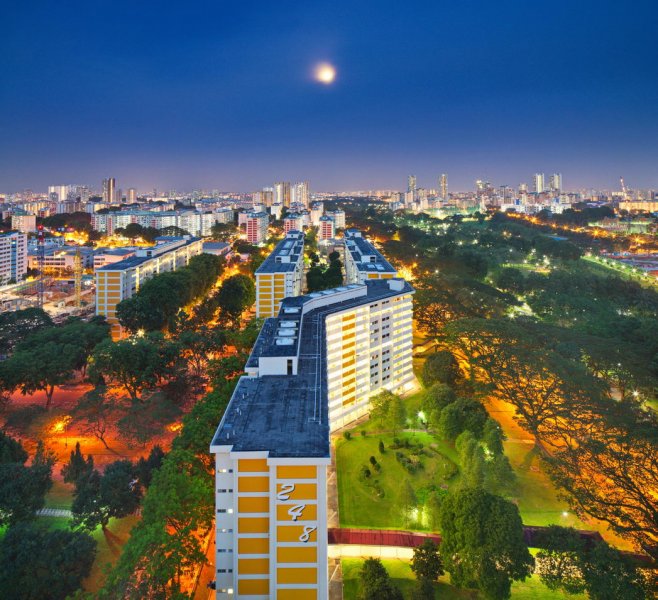Check out these amazing photos of Singapore taken from the air
Richard Koh's photos were taken from tall buildings and helicopters, revealing a side of the city you've never seen.
A former engineer, Richard W J Koh's photography has shown in New York, San Francisco, Dhaka and Bangkok and has won awards from the New York Institute of Photography and the International Photography Awards. But his most recent series, comprising unusual and surprising photos of Singapore taken from helicopters and tall buildings, really caught our eye. From eerie images of Singapore's ports to strange geographical formations, these striking images will be part of an exhibition at the URA and have been compiled into a book, Over Singapore. Here, the photographer shares how he came to work on this project.
 Lady in the Sand
Lady in the Sand
What’s something about Singapore that you see from the air that you can’t really see from the ground?
There are a number of interesting and hidden parts of Singapore that are visible only from above, such as in photos entitled Lady in the Sand and Garden Face. There are also interesting patterns and landforms which are only revealed from the sky. The outlying islands, lighthouses and land being reclaimed can only be seen in their entirety from an aircraft as there are no tall buildings there to view them from. Familiar buildings in the city such as The Esplanade, Gardens by the Bay and Resorts World Sentosa all look very interesting from the air. Even our ubiquitous HDB flats resemble "Legoland" when viewed from above, as radio DJ Maddy at Kiss92 FM put it.

Hopper Port
You made a mid-career switch to photography. Tell us about that.
After obtaining my Masters in Engineering, I worked in HP as an R&D engineer for three fruitful years, with some mechanical design patents filed, before I decided that I had to give myself a chance at professional photography as a dream career. I finally made the decision in 2003 after more than a year of deliberation. Fortunately, there wasn't a major income loss in my first year and after about two to three years, I was thankful to be able to earn a decent living in professional photography. Most of my clients came to me upon recommendation by their contacts. Some, especially from overseas, found me through my website. My philosophy that a person who puts his heart in his work will receive his just wages, paid off. My faith that God gives us our daily bread also helped me greatly, especially when I often do not know when my next job will come.
How do you choose what locations you’ll photograph?
Some locations were considered out of curiosity. Some were thought of from meetings with the publisher Didier Millet and the writer Professor Tommy Koh. Others were from studying the map of Singapore and with the idea of covering the most remote ends of the island and having a good balance in the types of places: urban, rural, modern, historic, et cetera.

Flat Mosaic
Which is your favorite photo and why?
I don't have one favorite photo, but I have a number of special photos that contain illusions that I like. The "Lady in the Sand" is special because she was discovered after I took the photo of the sandbar in low light, when I was looking through my images on my computer. Space Ships is a special one because of the atmospheric condition of the haze and the clouds that obscured the sun in the sky left a reddish reflection in the sea. There was also no horizon in the photo which gave an illusion of ships floating or flying in the sky.
Isn’t it hard to do much work, when it involves arranging expensive transport?
It is indeed! Much time was spent studying maps and planning the flight routes for the civilian helicopter flights to maximize opportunities in the air and all manner of contingencies. The terrible haze and busy air traffic in our airspace made it all the more challenging. As for the military helicopter flights, I only had one take at everything and no say in the route as I was hitching a ride on each flight for the National Day rehearsals last year. I depended on good communication, flexible and adaptive plans plus great teamwork with all concerned. Much equipment preparation was also needed from securing everything before flight, to proper camera settings, to checking that all equipment function and the tiny details like knowing your camera's data write speed to pace the shots at the decisive moments. The rest of it can't be prepared such as instinct and being able to react to changes in the air.

Moonrise over Ang Mo Kio
Advertisement